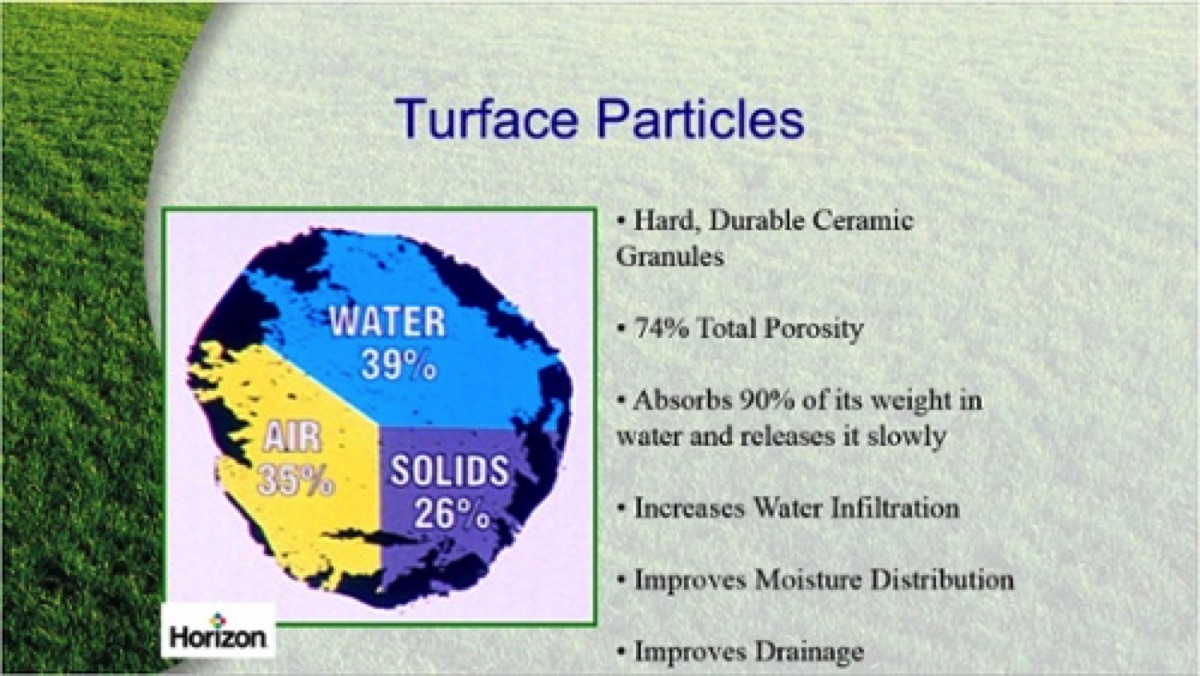
Ways Of Improving Soil Structure
November 25, 2014
Are you aerating your lawn then filling the holes with sand? Then you're missing an opportunity to greatly improve the water holding capacity of your soil.
In part 18 of our Drought Solutions video series, you'll see why many green industry professionals are moving from sand to Turface, a calcined clay product that allows you to hold more water in the root zone.
Video Transcript
So how do we get from a collapse of soil plates that are all stacked and stuck on each other and we can't get any water and nutrients into it? How do we get from here to a soil now that has microbes in it, that has some enzymes, has some beneficials, has some organics in there?
What's our one way, especially in turf, that we can incorporate into that profile without digging out all that turf, tilling the soil, putting all of our stuff in and putting turf down? How would we go about doing that?
Hopefully we do it at least once a year. Aerate. You're absolutely right. So we're going to aerate. After we aerate, what do we do for the existing holes that are left there?
Traditionally everybody filled them with sand. Sand's cheap. Put sand in those holes. You see putting greens? They sand em. Fairways. They sand em. Sports turf, now landscape turf is not sanding anymore.
How Turface Works

They're putting in a product called Turface. That's a calcined clay product and we're going to talk about it because the reason we use it is because it holds moisture.
Sand has no nutrient value. This has no nutrient value. Sand has zero water holding capacity. How much water does the beach hold? None. The beach won't hold water. Sand has no water holding capacity.
This is a calcined clay. They bake it. That's what makes it into a ceramic. It's a real durable product that doesn't break down. This is the beauty of it. 74% of it is porous. It'll absorb 90% of its weight in water and release it slowly back to the soil profile.
That's why I like this product a lot. Cause now it's gonna take all that nutrient, it's gonna take all that water, and it's gonna hold it in the root zone. Now we got massive amounts of roots, we've got water held in the root zone, our soil is working for us. Our drought tolerance on that turf really grows.
So where they want to take out turf on your properties, you say wait a minute. Let's start working the soil, let's start working your irrigation system, let's save you water by having better, healthier soil. So not only is it going to hold water, but it's gonna help get that water into the soil profile. So everything we talked about, about getting water to the turf surface, getting water to the turf surface.
Now we're doing it at the right rates. Now we can get it to where it needs to go. It needs to be able to get into the soil. Now your water moisture distribution is better and it will improve your drainage because now your soil has the ability to let some water go.
It looks sort of like this. You've got your soil particle, you've got air, you've got water in there. Your Turface is totally part of that soil profile now. You almost build that ideal crummy soil because the product is getting in there and it's holding the nutrients. It's holding all of the airspace. It's increasing the porosity of that soil. All things that we need to have.
An Example of Turface at Work

Here's an example. Here's bermudagrass on native soil, no amendment. All planted the same time. All cared for the same time. Here it is on 50% sand on native soil. Here's your root structure. Here it is with 20% Turface added to that soil. Holding the nutrients in the soil profile. Look at how much deeper you can water. How much deeper it's pulling those roots down in.
Click Here for More Drought Solutions
